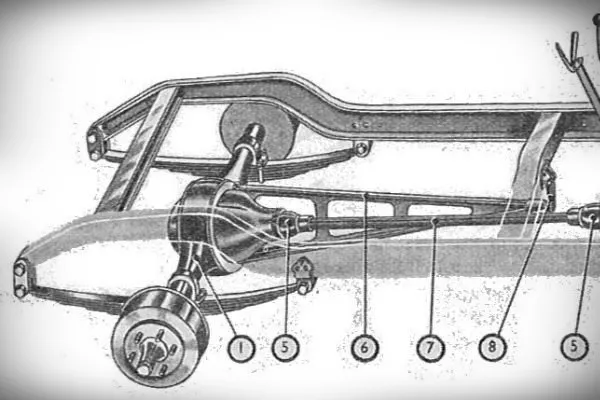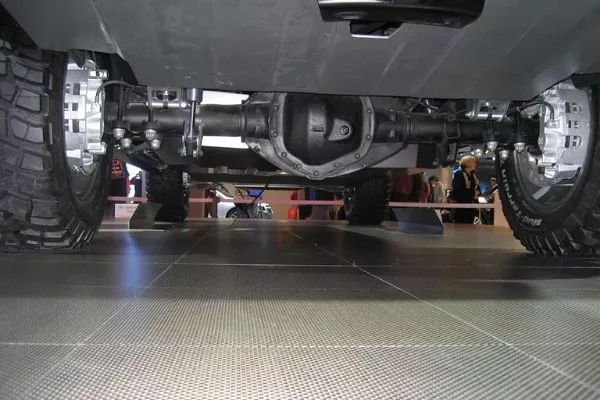Modern passenger cars use one of three drive layouts: rear-wheel-drive (RWD), front-wheel-drive (FWD), and all-wheel-drive (AWD).
The latter is an accepted description of vehicles constantly by all four wheels, as opposed to four-wheel-drive (4WD) cars that have a selectable drivetrain and engage either part-time or permanently.

The RWD layout transfers torque from the engine to the rear wheels via a driveshaft
>>> Related: Front Wheel, Rear Wheel or All-Wheel drive: Which is better?
RWD dates back to Karl Benz’s Patent-Motorwagen in 1885, and many cars in the 19th and 20th centuries were propelled by the rear wheels until 1970, when oil embargoes forced carmakers to adopt FWD in designing more compact models.
The trend has carried on to this day, with FWD as a standard feature on mainstream cars to emphasize fuel efficiency. RWD is largely used on high-performance cars, trucks, SUVs, and utility vehicles.
Some of the advantages you’re getting with a RWD vehicle include more balanced weight distribution, better acceleration, and more towing or hauling capability.

Pulling power makes RWD suitable for trucks and adventure vehicles
>>> Related: 4 RWD sports cars with manual transmission priced under PHP 800,000
It’s generally accepted that a FWD layout brings down a vehicle’s cost, since there is no driveshaft, transmission tunnel, and rear axle to fabricate unlike on a RWD car. But does this mean that RWD is more difficult to maintain?
The relative mechanical simplicity of RWD works in its favor. FWD cars pack the engine and transmission tightly into a single unit, while AWD ones are even more complex with their array of sensors.
RWD vehicles use a straightforward layout that distributes the drivetrain more evenly, as the front wheels handle the steering while the engine powers the rear wheels using a driveshaft.

A solid rear axle easily shrugs off bumpy rides
RWD vehicles typically use a solid rear axle, which is durable enough to take on abuse while needing minimal maintenance (changing the differential fluid at most).
The one-piece build is the reason why a truck can run over a curb and suffer little to no damage to the axle, perfect for emergency responders, law enforcers, and adventurers.
In cases where the driveshaft and U-joints or CV joints are damaged, fixing or replacing them is easier without having to take the steering apart.

Emergency response vehicles benefit from RWD's robust yet simple build
If you were to draw up a list of cars to buy, would RWD’s ease of maintenance be one of your considerations? Tell your opinion with Philkotse.com in the comment section below.
Recent posts
- 7 common problems with the car’s driveshaft Jul 11, 2019
- Reveal myths behind 2WD and 4WD Aug 16, 2022
- 4 simple methods to tell if a car is a front-wheel drive or rear-wheel drive Oct 20, 2021
- The ins & outs of car transmission and drivetrain Jan 31, 2019
- 4WD vs AWD: Getting a grip on the road Sep 20, 2021











